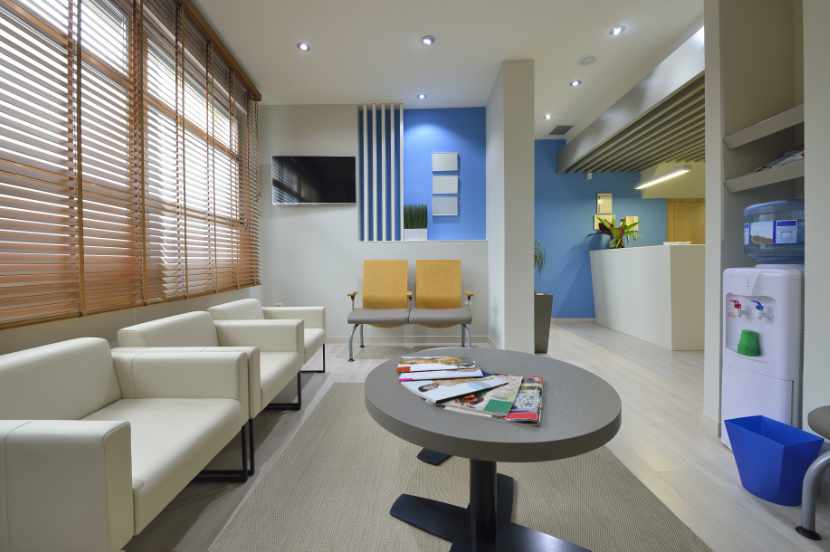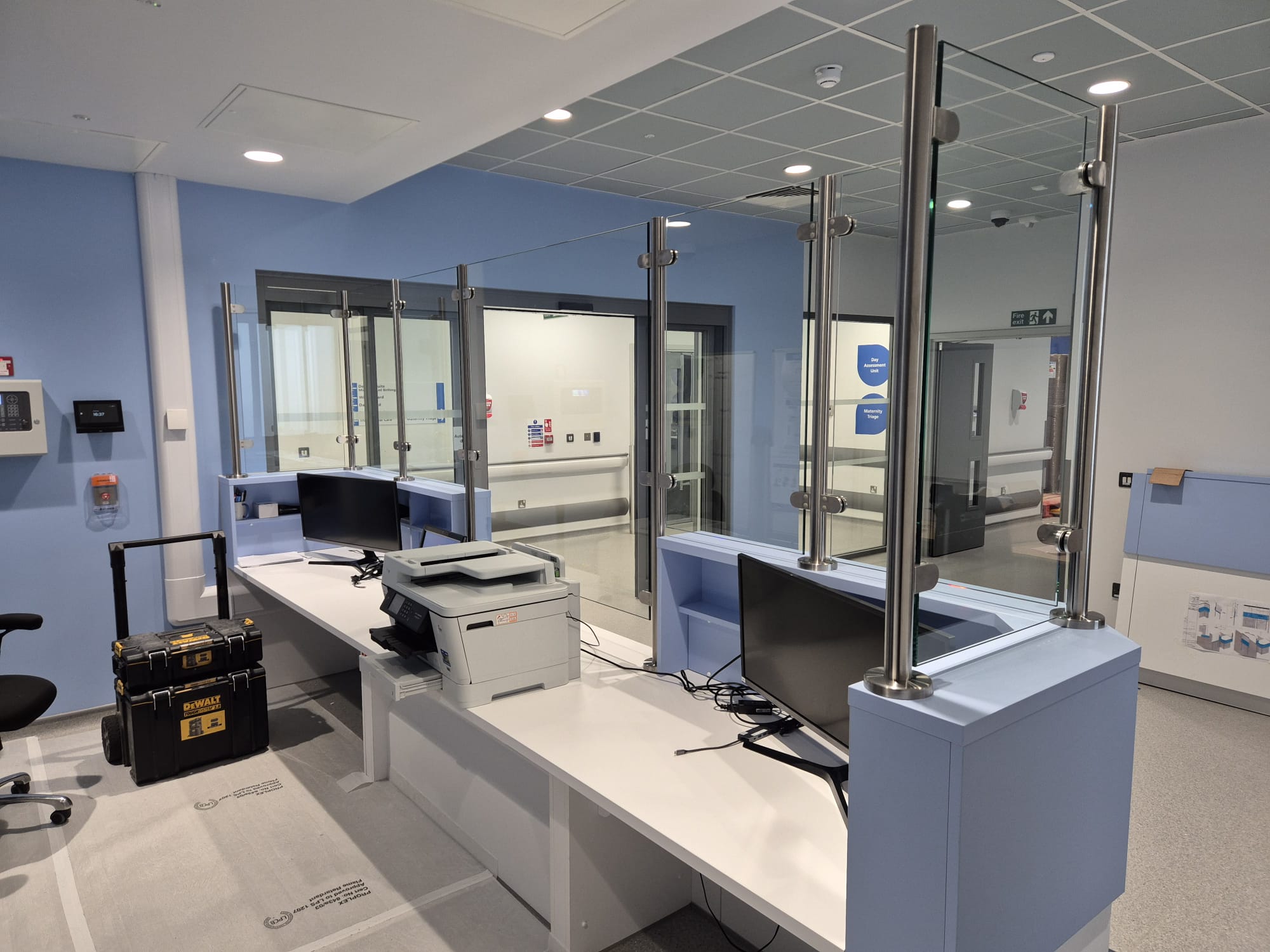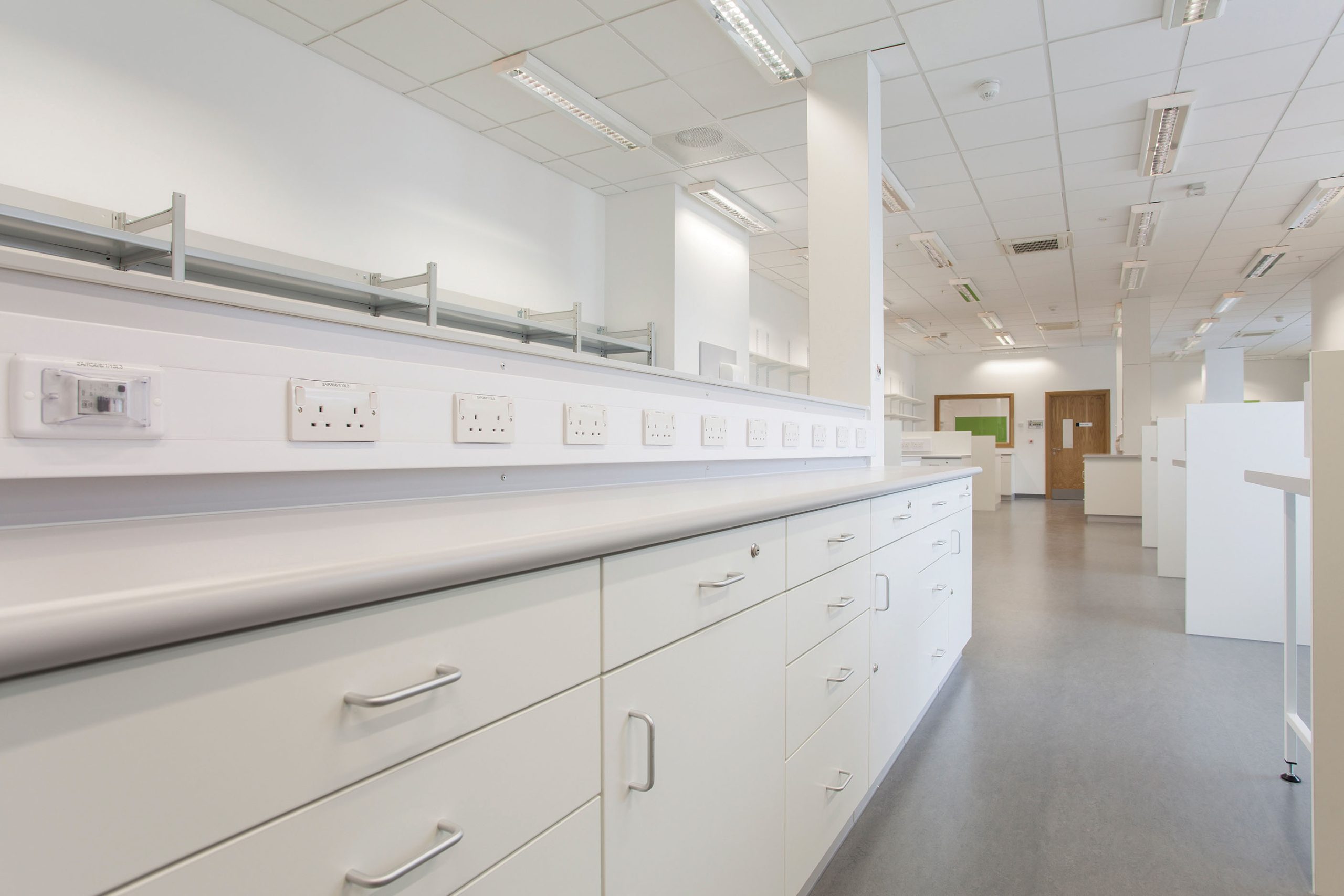The safety of NHS staff has become one of the most pressing challenges facing healthcare…

Are you in a hospital or a hotel?
Since the opening of the new £1.6 million state-of-the-art Harbour Medical Practice, near Eastbourne, Nikki Cleary, Practice Manager, has had countless compliments from patients about the look and feel of the new building. Patients have enjoyed the beautiful and relaxing surroundings which one would normally expect to see in the lobby of a hotel!
In the US, hospitals and care centres have long been associated with deluxe surroundings, with patients enjoying private rooms, flat-screen TVs and views of nature. Their entrances feature aesthetic cues such as stone fireplaces and even waterfalls. For example, Gerard van Grinsven, an executive with the well-known hoteliers the Ritz-Carlton Group, was engaged to run its newest hospital in Michigan, The Henry Ford West Bloomfield. His primary focus was on service excellence and people, which ultimately saw the hospital flourish. His experience in hospitality and treating patients more like customers was reaping rewards.
Style over substance?
However, there were some American Health Economists who felt that hospitals were focusing too much on the creature comforts and were adding unnecessary costs to the nation’s healthcare bill. In the UK, our healthcare is free at the point of entry, which means hospitals have to be much more inventive when it comes to spending the NHS budget. Patients wouldn’t thank us for compromising people’s health in favour of installing leather sofas, fireplaces and fine art.
Positive health
Equally, many people would argue that hospitals were not meant to be “experienced” but instead should be clinical, free from fuss and, above all, able to provide the patient with the physical treatment they would expect. However, in 2020, research in The Psychology of Wellbeing showed that mental welfare was just as important as physical health and that a sterile environment was having a negative effect on people’s mental health.
Certainly, creating a more holistic approach when it comes to the aesthetic nature of our hospitals would seem to be preferable, and could help to speed up both a patient’s mental wellbeing and the physical healing process. We know that the only place we want to be when feeling unwell is at home in surroundings that are familiar. The balance between form and function in regard to hospital furniture and the environment around us is a delicate one. However, when done in unison, the benefit to patients could be huge.
Hospital or hotel? Where to find out more
If you’d like to learn more about how healthcare furniture can help create a an aesthetically pleasing hospital environment, please get in touch.
Read case studies about furniture contracts we’ve completed for several hospitals & healthcare facilities throughout the UK.
Check out our Video & Library resources section for colour cards, BIM drawings and other aids for architects and contractors. Or please get in touch to find out how we may help with your latest project.
At David Bailey Furniture Systems, we have have helped architects and contractors design fitted furniture for the hospital and other healthcare environments for over 35 years. Our factory is in Broadstairs, Kent in the UK and we have provided furniture for many NHS hospitals and private hospitals, including Wexham Park, Guy’s & St Thomas’, Great Ormond Street Hospital, Spire Hospitals and University College London Hospital (UCLH), as well as many regional hospitals, GP surgeries and health clinics around England and Wales.








